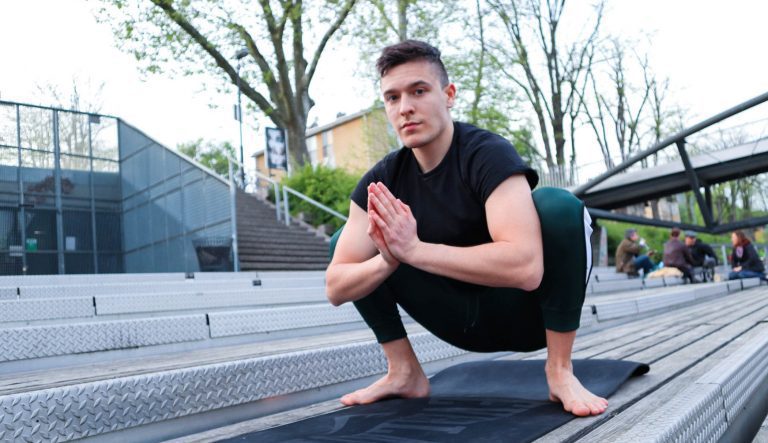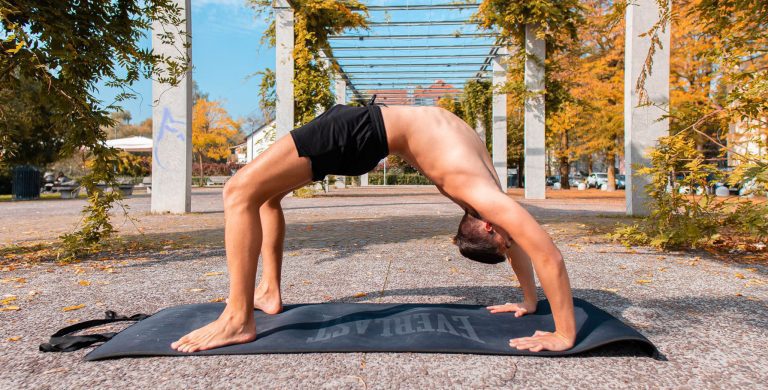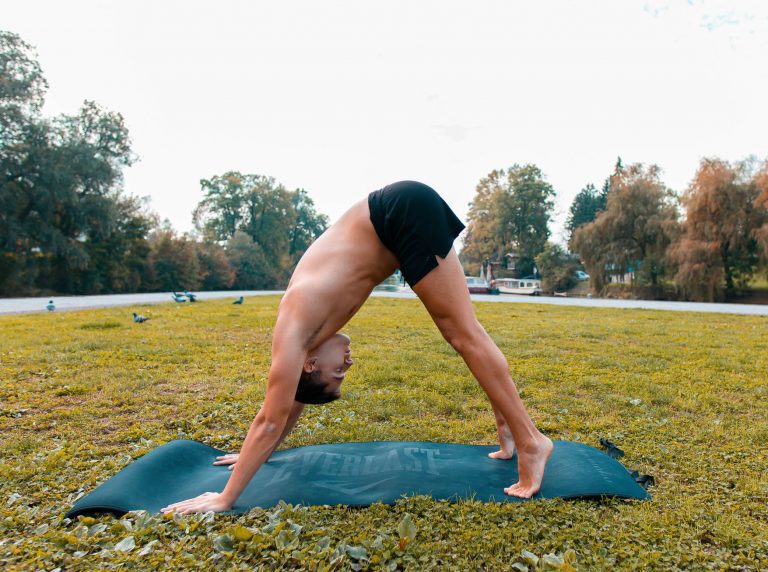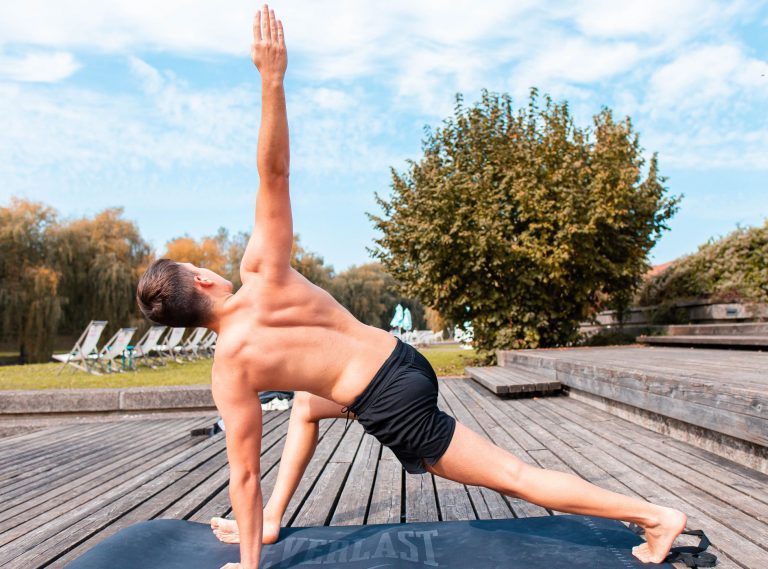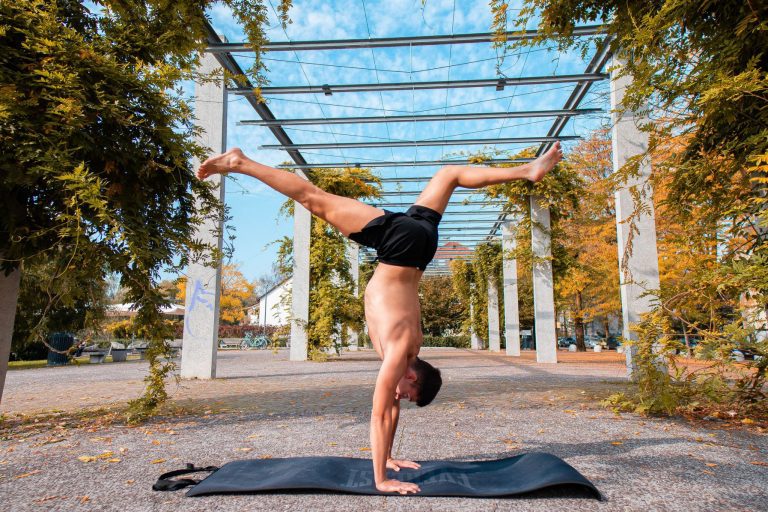Hot Yoga Training | Benefits, Structure & Essentials
Hot yoga training is the practice of yoga, performed under heated conditions of 90-105 F with high humidity of 40%, replicating Indian climate, thought to promote many beneficial effects. It is done under the supervision of a certified Bikram or other Hot Yoga style teacher in a room full of mirrors and sweat-absorbable carpets.
Hot Yoga Training vs. Bikram Yoga
Bikram yoga is a style of hot yoga. Terms are used interchangeably, but they are not exactly the same. Hot yoga is a yogic practice in a heated room, while Bikram Yoga is one style of Hot Yoga done as a fixed practice of 26 postures, done in specific order to produce maximal benefits.
Equipment essentials
Every practitioner has to bring their own equipment since a lot of sweat is absorbed. Practitioners also need an insoluble water bottle, filled with water of course. Additionally, it is recommended to take off socks or gloves to provide extra support or grip through this sweaty practice. Different studios have different equipment, but students usually bring one towel with them, in case the studio or health resort at which they practice, doesn’t provide that.
Preparation – drink more water, wear a swimsuit
Practitioners must prepare themselves before attending a hot yoga class because it is more demanding than most other practices because of the high temperature and humidity. Hydration is crucial, not just before the workout but should be considered throughout the whole day, providing a sufficient amount of water and minerals. Clothing is best if it fits the practitioner without slipping while providing him with the comfort to move through the deeper poses. Usually, it is a swimsuit or fitted shirt with loose pants.
Training structure and room ambiance
The structure of training definitely depends on the style of Hot Yoga, but usually, this yoga is done with a certified yoga teacher in a room full of mirrors and carpets that can absorb sweat, on a personal mat with a towel. Instructors guide you through the poses, but what makes this style unique is that practitioners must know to find alignment by themselves while looking at their posture in a mirror. There is no music or clapping in the class. Hot yoga classes are usually of longer duration, 45-90 minutes.
Different Hot Yoga styles
Hot yoga is extremely popular throughout the world. It is not that hard to find a local studio that offers some of the Hot Yoga styles.
The most common Hot Yoga styles include:
- Forrest yoga, which is characterized by holding poses with longer duration, mainly training twenty asanas, stretching both sides.
- Corepower, a multilateral yogic style, was founded in 2002.
- Another popular style is Power yoga, which includes a mixture of Vinyasa flow and core strengthening exercises.
- Next is moksha yoga, founded in 2004 in Toronto, suitable for all three levels of practitioners, starting and ending with the savasana resting pose, which is used to improve muscle strength and flexibility.
- Triblance, which is a combination of Bikram and yin yoga, emphasizes the practice of meditation. Each of these styles is done at a higher temperature than usual.
Flexibility
Higher temperature directly affects the acute flexibility of each muscle. If one continually practices this acute flexibility, which is the ability to stretch your muscle further, he can then increase the range of motion, resulting in improved flexibility. Heat is the best mechanism for muscle relaxation and stretching. This is the main reason why we warm up before playing sports, to increase the range of motion and decrease the risk of injury. Encouraging circulation and blood flow in our connective tissue, we gradually increase ROM.
Sweat your toxins out
One of the major benefits of indulging in this style of yoga is detoxification. To flush toxins out of our the body. A heated environment will cause your body to sweat even more and sweating flushes the toxins out while bringing new fresh oxygen to your connective tissue and internal organs. When we release toxins we can enable our organs to function better, to balance out and clear our skin.
Longer duration
Hot Yoga practices usually involve staying in a certain pose or asana for a longer duration. This is meant to improve balance or flexibility since all the asanas are structured that way. The longer time spent in a specific pose that stretches the muscle will stretch it even further. Longer duration in balance will, of course, improve your balance. Lengthening your breath and staying in poses for longer also works your patience and positively impacts the way you react to temptations.
Hot Yoga Benefits
Here is a list of potential benefits that come as a result of training Hot Yoga:
- improved flexibility & mobility
- improved range of motion
- weight loss, efficient calorie burner
- cardiovascular exercise increased lung capacity
- increased bone density
- detox and skin regeneration
- improved sleep quality
- decreased stress
Bikram Yoga – popular Hot Yoga Style
Bikram Yoga is a style of Hot Yoga, practiced at 105 F with 40 percent humidity, created by Bikram Choundhury who moved and taught it to Americans, Hatha became popular in the 1970s. Besides the many health benefits of yoga, the main goal of Bikram Yoga is feelings of pure energy and detoxification.
Training structure
Bikram yoga is a fixed practice which means the same poses are done every time in the same order. There is a certified Bikram Yoga teacher who guides through the asanas with speaking. No music or clapping in the background. Students must align their posture by themselves, which makes this style unique. That is why they have mirrors on every wall. There are also special carpets that absorb sweat.
Bikram yoga has 26 postures, 24 of which are physical asanas and the other two are meditation and pranayama. Every posture is done in order, following after the previous one. This practice is fixed and cannot be manipulated by other teachers, since it was created to produce the maximal effects in that order.
80-20 and exhalation breathing method
Breathing techniques used in Bikram Yoga are the 80-20 method which is done by inhaling fully and continuously exhaling 20 percent of our air through the nose.
The second method is the exhalation method, in which practitioners take a full deep breath in and exhale completely going into the pose and keep exhaling while holding the pose.
Bikram Yoga gained huge popularity in the 20th century, mostly in the Western world. There are around 1650 certified Bikram studios, so it is not hard to find a local one.
Cautions
- Dehydration is one major factor that can negatively affect your health. Practitioners must drink enough water before, during, and after hot yoga sessions. Bring an insoluble water bottle to your practice.
- Lightheadedness and exhaustion are signs of inability to fully cope with the heat given in our environment, to stay away from any health-related problems one must leave the practice if feeling lightheaded
- Joint or muscle damage is possible here. Do not overdo it. Overstretching your muscles, tendons and ligaments can have a negative impact on joint stability and strength. It is not dangerous, unless you push too far, remember that your muscles can assess a higher range of motion due to the heat they are exposed to.
- Pregnant women or people with any history of heat or heart stroke are advised to stay away and choose an easier practice, in less demanding conditions. Hot yoga may not be safe for people with anorexia, arterial abnormalities, or a history of fainting.


